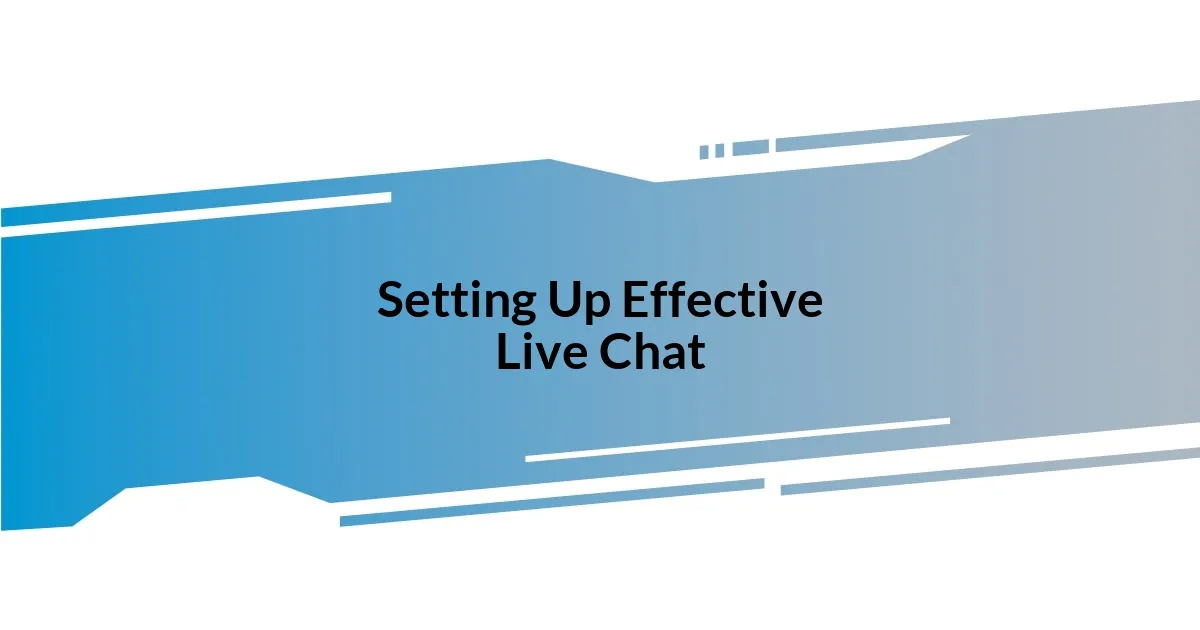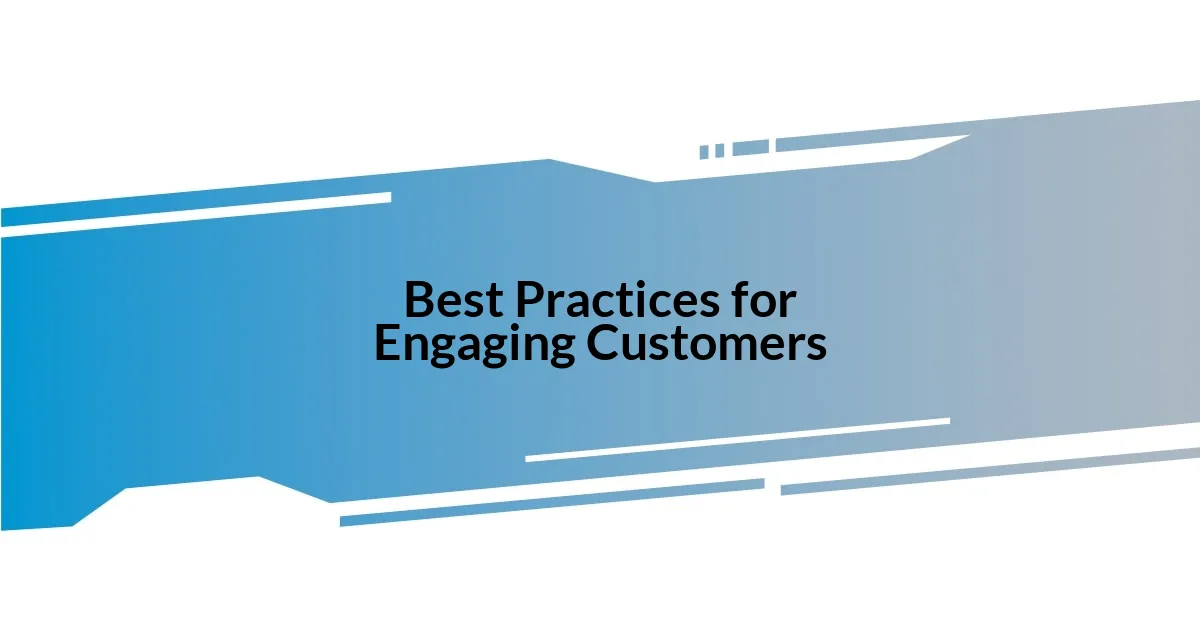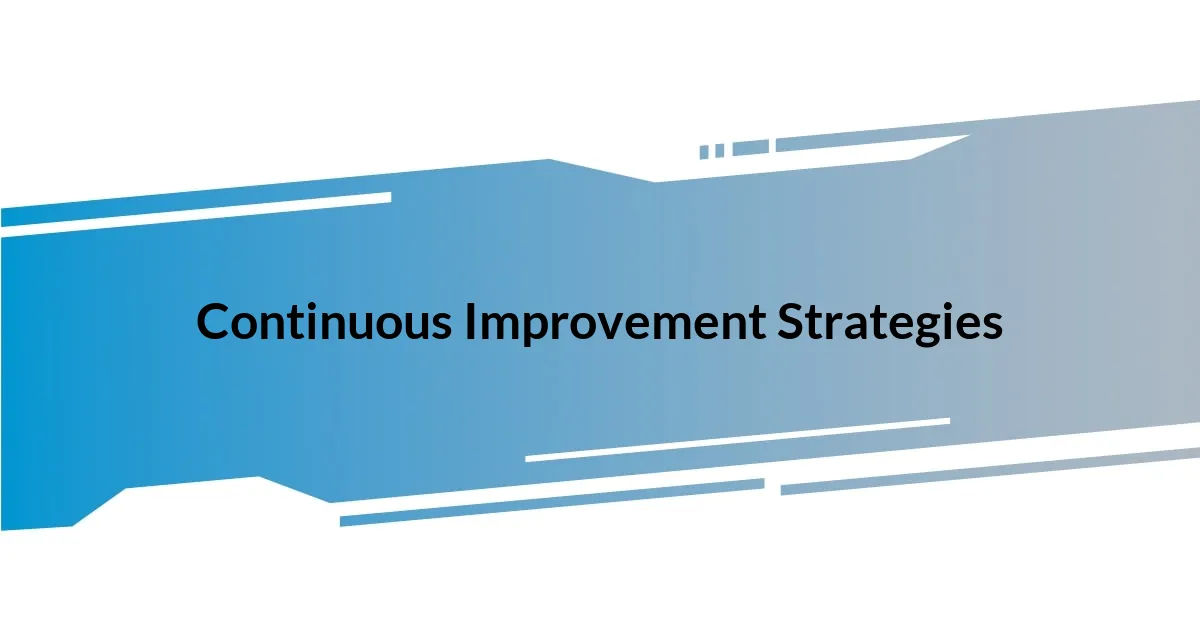Key takeaways:
- Live chat fosters instant connections, empowering customers with real-time assistance, leading to increased satisfaction and loyalty.
- Effective live chat setups require knowledgeable representatives, prompt responses, personalization, and clear communication of availability hours.
- Engaging customers involves a friendly tone, solution-focused assistance, and asking open-ended questions to uncover their needs.
- Continuous improvement strategies, including regular training and feedback mechanisms, can significantly enhance live chat performance and customer satisfaction.

Understanding Live Chat Benefits
One of the standout benefits of live chat is the instant connection it fosters with customers. I recall a time when a customer reached out with a simple query about product availability. Within minutes, not only did I provide the information they needed, but I also turned a potential frustration into a positive interaction. Isn’t it amazing how quickly you can turn uncertainty into satisfaction just by being available?
Live chat also empowers customers, allowing them to seek assistance in real-time without the hassle of waiting on hold. I remember a situation where a customer was navigating a complex checkout process. By engaging through live chat, I guided them step-by-step, leading to a successful sale. Have you ever noticed how a swift response can make customers feel valued and understood?
Furthermore, the data we gather from live chat interactions can be instrumental in improving our services. After a series of conversations about shipping times, we were able to identify a recurring issue that needed addressing. It made me wonder: how often do we overlook the insights right in front of us? By actively listening to our customers, we can not only enhance their experience but also refine our operations.

Setting Up Effective Live Chat
When setting up effective live chat, it’s crucial to ensure your team is well-prepared and trained. I’ve seen firsthand how a knowledgeable representative can make all the difference. One time, a team member deftly handled a disgruntled customer who was frustrated with a delayed order. Their calm demeanor and deep product knowledge brought the situation back on track, turning a potential loss into a loyal customer. It always amazes me how preparedness can transform a challenging interaction into a success story.
To enhance your live chat setup, consider these essential elements:
- Select the Right Software: Choose a platform that integrates smoothly with your existing systems, ensuring ease of use for both agents and customers.
- Prompt Responses: Aim for rapid replies; customers appreciate feeling acknowledged instantly, even if all you can do is confirm you’re looking into their question.
- Personalization: Use customer names and tailor responses based on previous interactions to build rapport and connection.
- Feedback Mechanism: Implement an immediate post-chat survey to gather insights on the customer experience, allowing continual improvement.
- Availability Hours: Clearly communicate when live chat is active, so customers know when to expect a reply.

Best Practices for Engaging Customers
Engaging customers through live chat requires a blend of genuine interest and proactive communication. For instance, I’ve always believed that the tone of my messages can set the stage for customer rapport. One memorable interaction was with a customer who seemed hesitant about making a purchase. By mirroring their enthusiasm and empathizing with their concerns, I noticed a shift in their demeanor. They went from unsure to excited about their decision. Isn’t it fascinating how a little warmth can transform a dialogue?
Another best practice is to offer solutions rather than just answers. I once encountered a customer having issues with a complex return policy. Instead of merely explaining the steps, I took the initiative to walk them through the entire process with patience and clarity. This hands-on approach made them feel supported and ultimately built their trust in our brand. How can we expect customers to feel confident if we don’t actively assist them through their journey?
Lastly, keeping the conversation flowing is key. I strive to ask open-ended questions to discover more about their needs. For example, while helping a customer upgrade their subscription, I asked about their specific requirements. This not only ensured they picked the right option but also made them feel valued. Engaging customers on a deeper level often leads to better satisfaction and loyalty.
| Best Practices | Description |
|---|---|
| Tone and Warmth | Use a friendly and approachable tone to build rapport and make customers feel valued. |
| Solution-Focused Responses | Provide comprehensive assistance rather than just answers, guiding customers through processes effectively. |
| Open-Ended Questions | Encourage dialogue by asking questions that allow customers to share more about their needs and preferences. |

Techniques for Personalizing Conversations
To truly personalize conversations, I’ve found that using customer names is an incredibly effective technique. For instance, during a live chat, I noticed that addressing a customer by their name instantly created a more intimate atmosphere. It felt as though I was speaking directly to them rather than delivering a standard message. Doesn’t it make a big difference when someone recognizes us as individuals rather than just another inquiry?
Another powerful approach is to reference past interactions. When a customer returns, I make it a point to mention their previous chats or purchases. I once chatted with a customer who was looking for recommendations based on their last purchase. By acknowledging their history, I turned our conversation into a friendly catch-up instead of a transactional exchange. What a shift that made! It transformed the interaction into a meaningful dialogue, showing them we genuinely care about their journey.
Lastly, tailoring responses to reflect a customer’s preferences can elevate the conversation. I’ve had moments when a customer expressed a specific interest, say in eco-friendly products, and I seamlessly aligned our suggestions with their values. This not only showed that I was listening but also reinforced their choice and made them feel understood. Isn’t it rewarding to see how a few thoughtful adjustments can lead to deeper customer connections?

Analyzing Live Chat Performance
When it comes to analyzing live chat performance, metrics play a crucial role in understanding customer interactions. One metric that always catches my attention is the average response time. I recall a time when I monitored this closely for a week and noticed that reducing my response time from five minutes to two made a significant difference in customer satisfaction scores. Isn’t it interesting how a small change can lead to a major uptick in happiness and engagement?
Equally important is evaluating customer feedback after chats. I make it a habit to send a short survey to customers right after our conversations. There was a particularly enlightening instance where one customer praised my patience but mentioned that I could have offered more product details. This feedback opened my eyes to the importance of not just listening but also proactively providing information. How can we improve if we’re not asking for input?
Lastly, tracking conversion rates is essential in assessing live chat effectiveness. I remember analyzing my data over a recent campaign and found that chats initiated during peak hours had a 20% higher conversion rate than those during off-peak times. This insight prompted me to schedule my shifts more strategically. Isn’t it remarkable how numbers can guide our decision-making and ultimately enhance our customer engagement efforts?

Continuous Improvement Strategies
One of the key continuous improvement strategies I’ve implemented is regular training sessions for my live chat team. I vividly recall a session where we reviewed recorded chats, discussing what went well and what could be better. Listening to different perspectives made me realize how subjective our interactions can be. It spurred a conversation about empathy and active listening, concepts that are often overlooked but play a significant role in customer satisfaction. Why not invest time in refining our skills if it leads to happier customers?
Another strategy I find invaluable is fostering a culture of open feedback. There’s a particular instance where I encouraged my team to share their thoughts on our current practices. One team member introduced a simple tool for sharing quick insights, which transformed our approach to problem-solving. This transparency not only boosted morale but also sparked innovative ideas that improved our chat strategies. Have you ever considered how much untapped potential lies in truly listening to your team?
Lastly, I prioritize setting specific, measurable goals for improvement. One goal I recently embraced was reducing customer wait time to under a minute. In a recent analysis, we observed that by clustering our peak hours to ensure adequate staffing, we achieved a remarkable 30% reduction in wait time. Witnessing the immediate impact on customer satisfaction scores was a powerful reminder of how goal-setting coupled with tactical adjustments can drive remarkable change. Isn’t it exciting to see tangible results from our efforts?